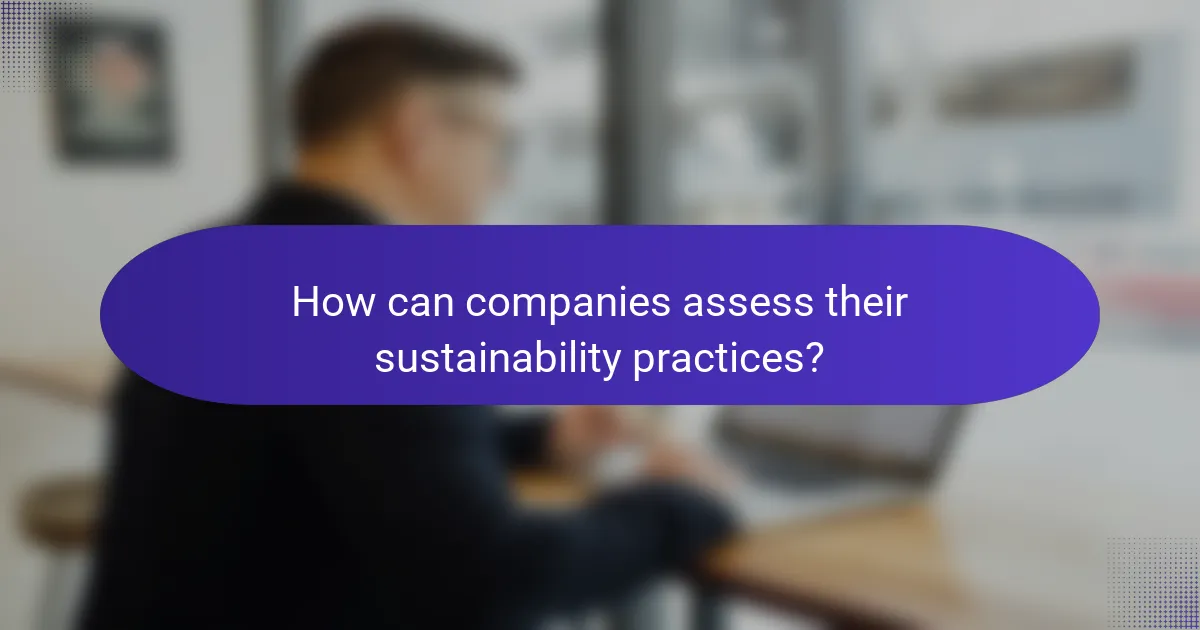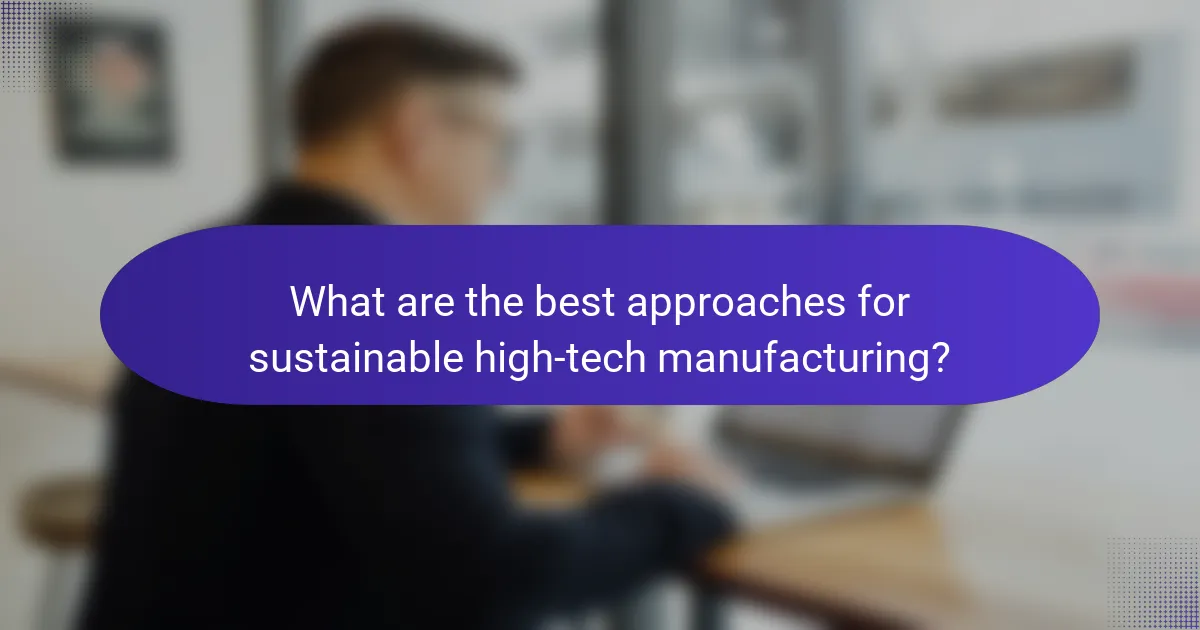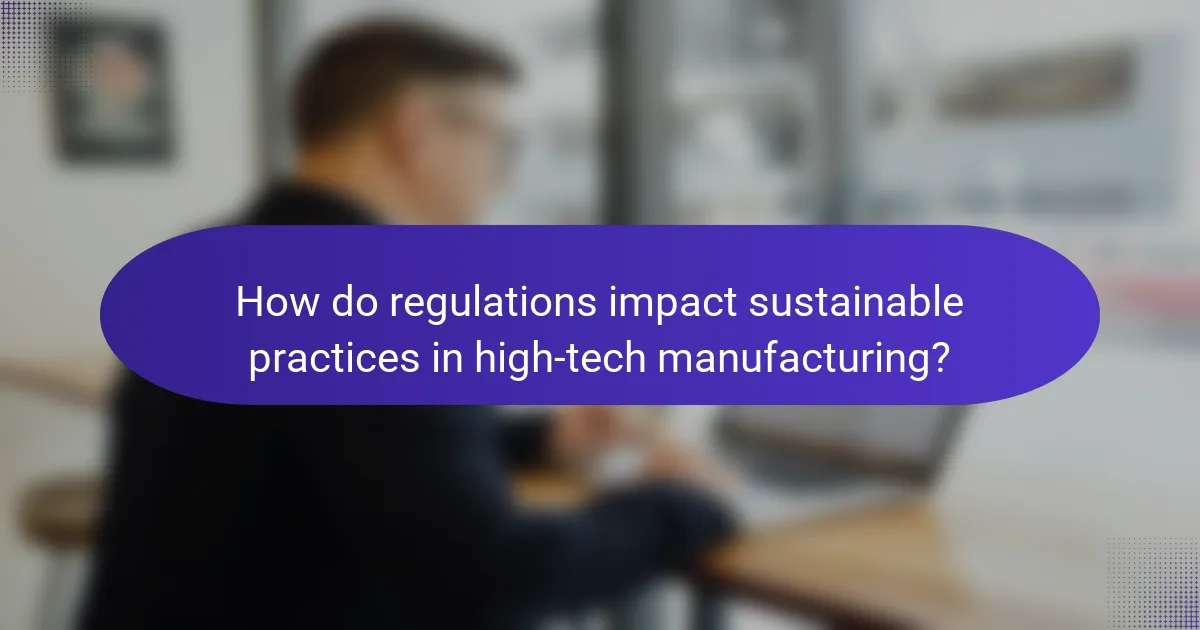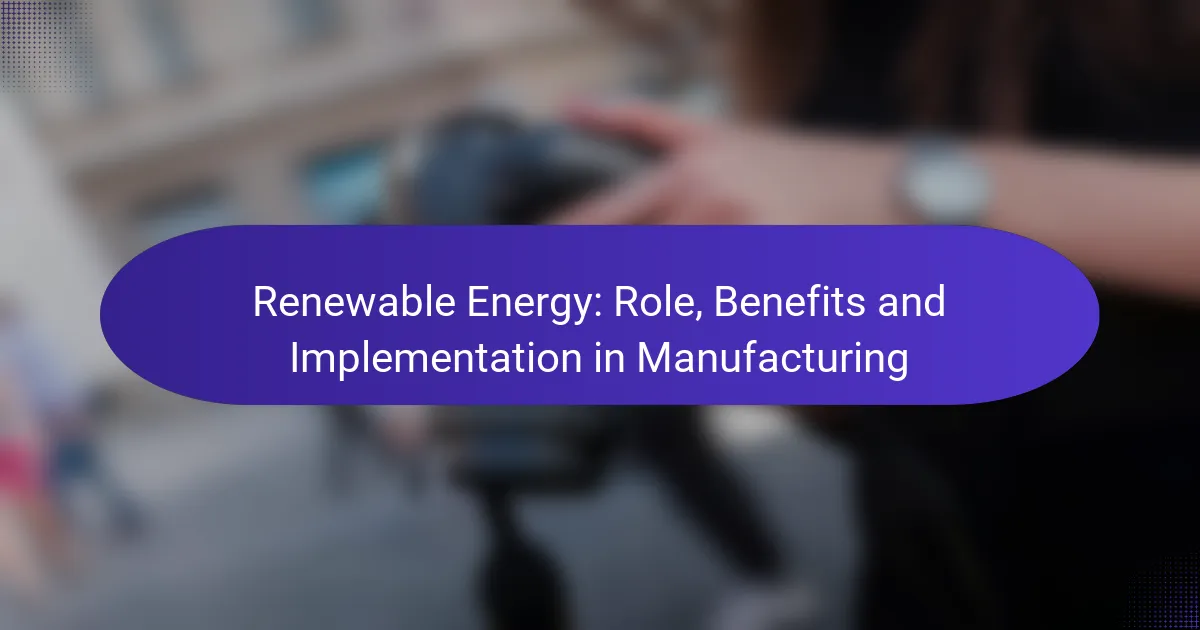Sustainable practices in high-tech manufacturing are essential for addressing pressing challenges such as resource scarcity and high production costs. By adopting innovative solutions like renewable energy and circular economy principles, companies can significantly reduce their environmental impact while maintaining operational efficiency. Evaluating sustainability practices through audits and benchmarking is crucial for continuous improvement and adherence to industry standards.

What are the challenges of sustainable practices in high-tech manufacturing?
Sustainable practices in high-tech manufacturing face several significant challenges, including resource scarcity, high production costs, technological limitations, regulatory compliance, and supply chain complexities. Addressing these issues is crucial for companies aiming to implement effective sustainability strategies.
Resource scarcity
Resource scarcity refers to the limited availability of essential materials required for manufacturing processes. High-tech industries often rely on rare earth metals and other finite resources, making it challenging to maintain sustainable production levels. Companies must explore alternative materials or recycling methods to mitigate this issue.
To manage resource scarcity, manufacturers can invest in research and development for sustainable materials or collaborate with suppliers to ensure a steady supply of necessary resources. Implementing a circular economy approach can also help reduce dependency on virgin materials.
High production costs
High production costs can hinder the adoption of sustainable practices in high-tech manufacturing. Implementing eco-friendly technologies and processes often requires significant upfront investment, which may not yield immediate financial returns. This can deter companies from pursuing sustainability initiatives.
To counteract high production costs, manufacturers can conduct cost-benefit analyses to identify long-term savings from energy efficiency and waste reduction. Additionally, seeking government incentives or grants for sustainable projects can help offset initial expenses.
Technological limitations
Technological limitations pose a challenge to sustainable practices in high-tech manufacturing. Many existing technologies may not be designed with sustainability in mind, leading to inefficiencies and increased waste. Companies need to adopt innovative solutions to overcome these barriers.
Investing in advanced manufacturing technologies, such as automation and artificial intelligence, can enhance efficiency and reduce waste. Collaborating with tech firms to develop sustainable innovations can also help manufacturers stay competitive while minimizing their environmental impact.
Regulatory compliance
Regulatory compliance is a significant challenge for high-tech manufacturers striving for sustainability. Various environmental regulations and standards, such as the EU’s RoHS and REACH, require companies to adhere to strict guidelines regarding material usage and waste management.
To ensure compliance, manufacturers should stay informed about relevant regulations and invest in compliance management systems. Regular audits and employee training can also help maintain adherence to sustainability standards and avoid potential penalties.
Supply chain complexities
Supply chain complexities can complicate the implementation of sustainable practices in high-tech manufacturing. Global supply chains often involve multiple stakeholders, making it difficult to ensure that all partners adhere to sustainability principles. This can lead to inconsistencies and increased environmental impact.
To address supply chain complexities, manufacturers should establish clear sustainability criteria for suppliers and conduct regular assessments to ensure compliance. Building strong relationships with suppliers and fostering collaboration can also enhance overall supply chain sustainability.

What solutions exist for sustainable high-tech manufacturing?
Sustainable high-tech manufacturing can be achieved through various solutions that focus on reducing environmental impact while maintaining efficiency. Key strategies include adopting renewable energy sources, implementing circular economy principles, using sustainable materials, and investing in green technologies.
Adoption of renewable energy sources
Utilizing renewable energy sources, such as solar, wind, and hydroelectric power, significantly reduces the carbon footprint of manufacturing processes. Companies can invest in on-site renewable energy installations or purchase green energy from suppliers to meet their operational needs.
Transitioning to renewable energy often involves an upfront investment, but it can lead to long-term savings on energy costs and enhance a company’s reputation as a sustainable business. Additionally, many governments offer incentives or subsidies to support this transition.
Implementation of circular economy principles
The circular economy model emphasizes reusing, recycling, and refurbishing materials to minimize waste. High-tech manufacturers can adopt practices such as designing products for longevity and easy disassembly, which facilitates recycling at the end of a product’s life cycle.
Companies should assess their supply chains to identify opportunities for waste reduction and material recovery. Collaborating with suppliers and customers can enhance resource efficiency and create a more sustainable business ecosystem.
Use of sustainable materials
Incorporating sustainable materials, such as biodegradable plastics or recycled metals, can significantly reduce the environmental impact of manufacturing. Selecting materials that are sourced responsibly and have a lower carbon footprint is crucial for sustainable production.
Manufacturers should evaluate the lifecycle of materials, considering factors like sourcing, production, and disposal. Certifications such as FSC for wood products or Cradle to Cradle for various materials can guide companies in making informed choices.
Investment in green technologies
Investing in green technologies, such as energy-efficient machinery and waste reduction systems, can enhance sustainability in high-tech manufacturing. These technologies often lead to lower energy consumption and reduced emissions during production.
Companies should explore options like automation and advanced manufacturing techniques, which can optimize resource use and minimize waste. Staying updated on emerging technologies can provide a competitive edge while contributing to sustainability goals.

How can companies assess their sustainability practices?
Companies can assess their sustainability practices through a combination of methods that evaluate their environmental impact and adherence to best practices. Key approaches include conducting sustainability audits, benchmarking against industry standards, and gathering stakeholder feedback.
Sustainability audits
Sustainability audits involve a systematic evaluation of a company’s operations to identify areas for improvement in environmental performance. These audits typically assess energy use, waste management, and resource consumption, providing a clear picture of current practices.
To conduct an effective audit, companies should establish clear objectives, gather relevant data, and engage cross-functional teams. Regular audits can help track progress over time and ensure compliance with regulations, such as the ISO 14001 standard for environmental management systems.
Benchmarking against industry standards
Benchmarking allows companies to compare their sustainability practices with those of industry leaders or established standards. This process helps identify gaps in performance and areas where improvements can be made.
Companies can utilize frameworks such as the Global Reporting Initiative (GRI) or the Sustainability Accounting Standards Board (SASB) to guide their benchmarking efforts. By analyzing metrics like carbon emissions or waste reduction rates, firms can set realistic targets and strive for continuous improvement.
Stakeholder feedback
Gathering feedback from stakeholders, including employees, customers, and suppliers, is crucial for assessing sustainability practices. This input can provide valuable insights into perceptions of a company’s environmental efforts and highlight areas needing attention.
Surveys, focus groups, and open forums can facilitate this feedback process. Companies should consider implementing regular communication channels to ensure ongoing dialogue with stakeholders, which can enhance transparency and foster a culture of sustainability.

What are the best approaches for sustainable high-tech manufacturing?
The best approaches for sustainable high-tech manufacturing include implementing lean manufacturing techniques, conducting life cycle assessments, and collaborating with eco-friendly suppliers. These strategies help reduce waste, optimize resource use, and enhance the overall sustainability of manufacturing processes.
Lean manufacturing techniques
Lean manufacturing focuses on minimizing waste while maximizing productivity. By streamlining processes and eliminating non-value-added activities, manufacturers can significantly reduce material and energy consumption. Techniques such as value stream mapping and just-in-time production are essential for identifying inefficiencies.
For example, adopting a pull system can help ensure that materials are only produced as needed, reducing excess inventory and associated waste. Companies should regularly review their processes to identify areas for improvement and consider employee training to foster a culture of continuous improvement.
Life cycle assessment
Life cycle assessment (LCA) evaluates the environmental impacts of a product throughout its entire life cycle, from raw material extraction to disposal. This comprehensive approach allows manufacturers to identify hotspots where sustainability improvements can be made. Conducting an LCA can guide decisions on materials, processes, and end-of-life strategies.
When performing an LCA, consider factors such as energy use, emissions, and resource depletion. Tools and software are available to facilitate this analysis, helping companies make informed choices that align with sustainability goals. Regularly updating the assessment can also ensure that improvements are tracked over time.
Collaboration with eco-friendly suppliers
Partnering with eco-friendly suppliers is crucial for enhancing sustainability in high-tech manufacturing. By sourcing materials from suppliers who prioritize sustainable practices, manufacturers can reduce their environmental footprint. This collaboration can also foster innovation in sustainable materials and processes.
When selecting suppliers, evaluate their sustainability certifications, such as ISO 14001, and their commitment to reducing waste and emissions. Establishing long-term relationships with these suppliers can lead to better pricing and more reliable access to sustainable materials, ultimately benefiting both parties.

How do regulations impact sustainable practices in high-tech manufacturing?
Regulations significantly shape sustainable practices in high-tech manufacturing by establishing standards that companies must meet to minimize environmental impact. Compliance with these regulations often drives innovation and encourages the adoption of greener technologies.
Compliance with environmental laws
High-tech manufacturers must adhere to various environmental laws that dictate waste management, emissions, and resource usage. Regulations such as the EU’s RoHS and REACH directives require companies to limit hazardous substances in their products and processes, promoting safer manufacturing practices.
Failure to comply with these laws can result in hefty fines and damage to a company’s reputation. Therefore, establishing a robust compliance strategy is essential, including regular audits and employee training to ensure adherence to current regulations.
Impact of government incentives
Government incentives play a crucial role in encouraging sustainable practices within the high-tech manufacturing sector. Financial support, such as grants or tax credits, can offset the costs associated with implementing eco-friendly technologies and processes.
For instance, manufacturers in the United States may benefit from federal tax incentives for investing in renewable energy sources or energy-efficient equipment. These incentives not only reduce operational costs but also enhance a company’s competitive edge in the market.



